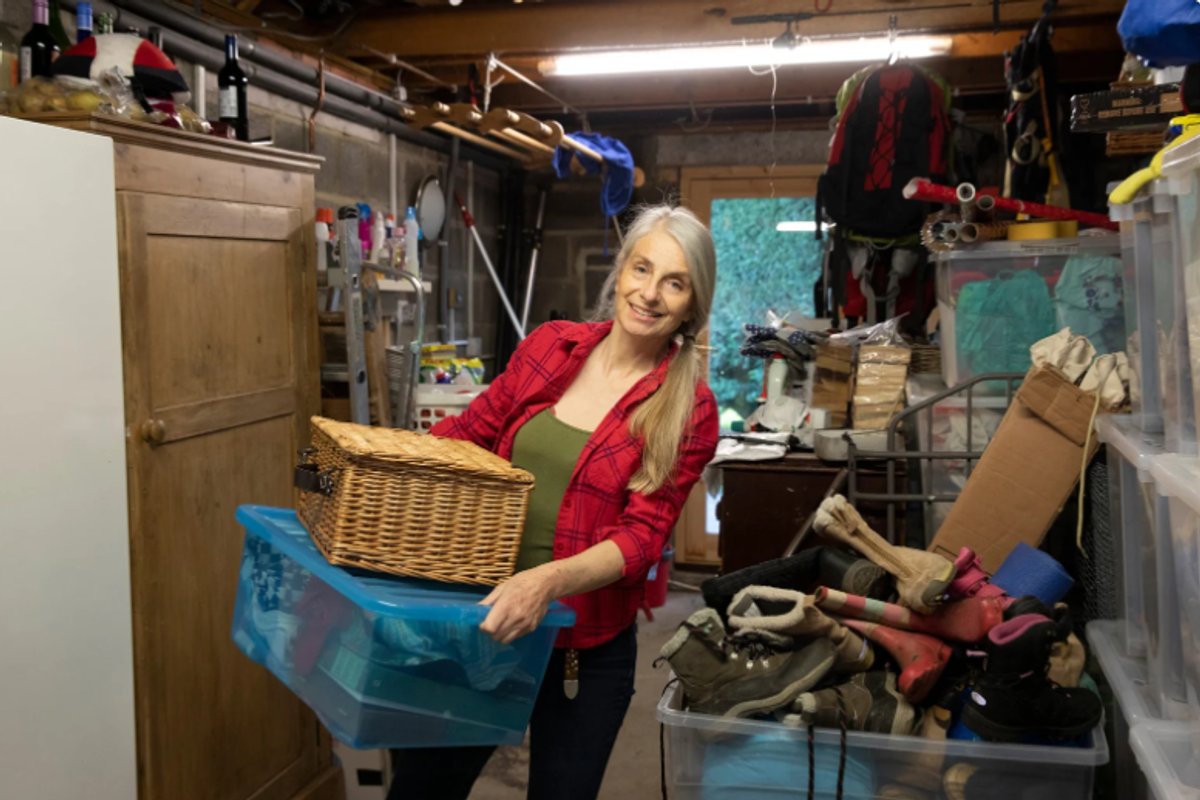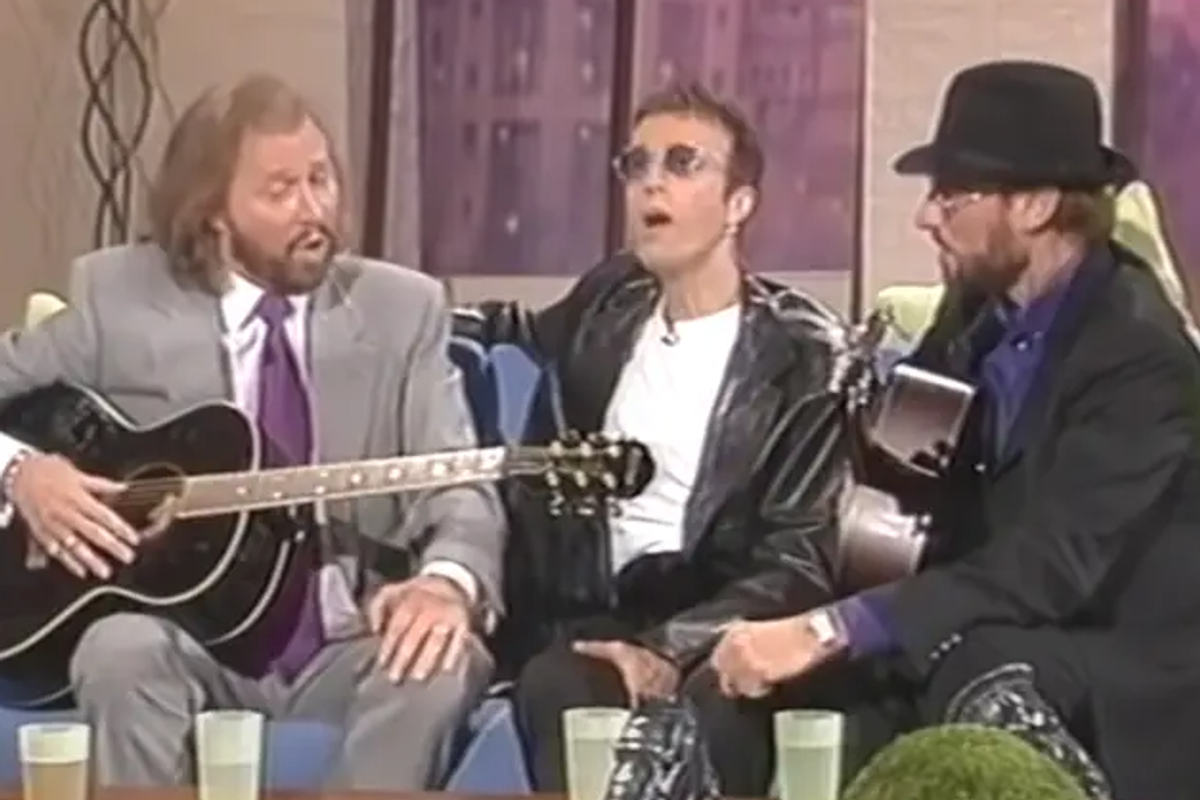The gender gap in literature is real.
Research has shown that women are less likely to have their books reviewed or to be contributors in many major literary publications.
Novelist Nicole Griffith found that in recent years, literary awards overwhelmingly go to men writing books about boys and men — and books by women about women and girls don’t receive near as many accolades.
That’s why fiction written by and about women is often relegated to the "women’s fiction" section, while fiction written by and about men … well, that’s just called "fiction."
GIF from "Lip Sync Battle."
It’s a huge problem.
And that’s why it’s such a big deal that The New York Times just named the 10 best books of 2015 — and seven of them were written by women.
GIF from "The Book Thief."
That’s right! Seven awesome women have been chosen as some of the best authors who published books this year.
Check them out below and add them to your reading list.
1. "The Story of the Lost Child" by Elena Ferrante
The Neapolitan series is a captivating series that tells the story of a friendship between two girls who become women over the course of four books, written by an author who calls herself Elena Ferrante. Almost as captivating for readers? Trying to figure out who the enigmatic Ferrante actually is.
Ask all of the readers in your life what their favorite book was this year, and at least one of them is bound to say that it was this one. Borrow it from them.
GIF from "Beetlejuice."
2. "Outline" by Rachel Cusk
If you love hearing other people’s stories, you’ll appreciate "Outline." In "Outline," the narrator says little herself, but the novel is filled with the stories and experiences of the people around her who feel compelled to share with her.
Although Cusk has published memoirs before, this novel is fiction — but there are obvious overlaps between the author and the narrator, who is recently divorced like Cusk.
3. "A Manual for Cleaning Women: Selected Stories" by Lucia Berlin
This Lucia Berlin collection contains 43 short stories, many of them about imperfect women in difficult situations. The stories focus on the trials of working-class women, and they’re gritty and sometimes humorous — just like Lucia Berlin was.
The author died in 2004. Talk about long overdue accolades!
4. "One of Us: The Story of Anders Breivik and the Massacre in Norway" by Asne Seierstad
Stories about people who commit unspeakable acts are often difficult to read, and this book by Asne Seierstad about the 2011 Norway shootings and bombing is no different. But it’s an important perspective on what modern violence looks like and what precipitates it.
And Seierstad herself is close to the story: She’s a Norway native who lives in Oslo.
5. "The Door" by Magda Szabo
"The Door" was originally published in 1987 in Hungary, but it was translated and republished for an American audience this year, eight years after Magda Szabo’s death.
This is a novel about a writer and her housekeeper. And according to a New York Times book reviewer, "It has altered the way I understand my own life." Sold.
6. "H Is for Hawk" by Helen Macdonald
The death of a parent can be a traumatic, life-changing event, and it’s a topic that many memoirs explore well. The difference between "H Is for Hawk" and those books is that Helen Macdonald coped with her grief by raising a bird of prey named Mabel.
7. "The Invention of Nature: Alexander von Humboldt’s New World" by Andrea Wulf
Andrea Wulf, a design-historian-turned-author, wrote this biography of Alexander von Humboldt and it really brings the 18th century German genius, ecologist, and scientist to life.
Buy this book for nature lovers, science nerds, and biography lovers on your list.
And a few bonus reads:
Just because!
8. "Enchanted Forest: An Inky Quest & Coloring Book" by Johanna Basford
2015 was the year that coloring books by adults went mainstream — both as a way to create beautiful illustrations and to relax and de-stress. It’s hard to walk into a coffee shop these days without seeing at least one table covered in colored pencils and one of these books.
In part, we owe this trend to Johanna Basford. Basford was "discovered" several years ago when a publisher found her desktop wallpaper designs online.
9. "Drawing Blood" by Molly Crabapple
This memoir by Molly Crabapple just came out this December. It’s the story of an artist’s life, but it’s also the story of contemporary America and what it means to be a witness to 9/11, Guantanamo Bay, and the U.S. presence in the Middle East.




 Stayin Alive GIF by Bee Gees
Stayin Alive GIF by Bee Gees 

 Coworkers laughing in the hallway. via
Coworkers laughing in the hallway. via A man and woman enjoying a conversation.via
A man and woman enjoying a conversation.via